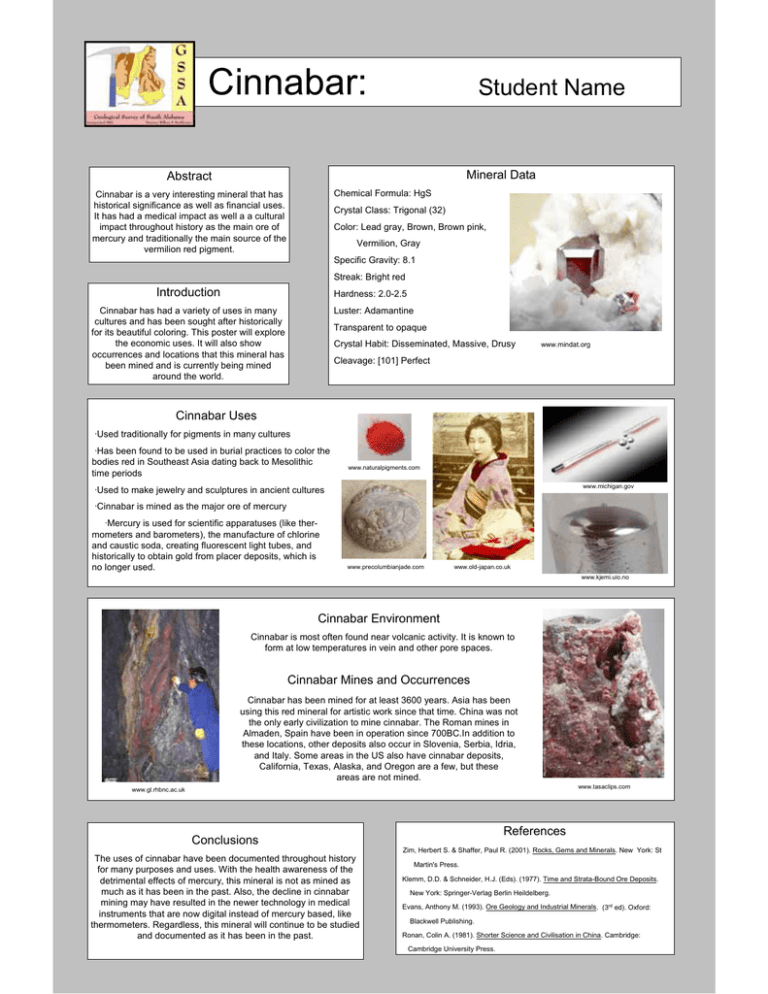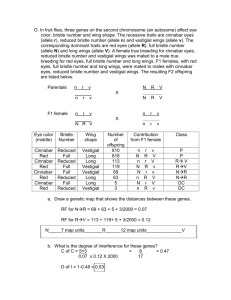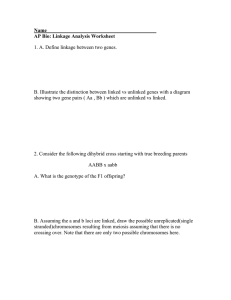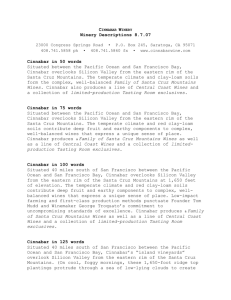Cinnabar: Student Name Mineral Data Abstract
advertisement

Cinnabar: Student Name Mineral Data Abstract Chemical Formula: HgS Cinnabar is a very interesting mineral that has historical significance as well as financial uses. It has had a medical impact as well a a cultural impact throughout history as the main ore of mercury and traditionally the main source of the vermilion red pigment. Crystal Class: Trigonal (32) Color: Lead gray, Brown, Brown pink, Vermilion, Gray Specific Gravity: 8.1 Streak: Bright red Introduction Hardness: 2.0-2.5 Cinnabar has had a variety of uses in many cultures and has been sought after historically for its beautiful coloring. This poster will explore the economic uses. It will also show occurrences and locations that this mineral has been mined and is currently being mined around the world. Luster: Adamantine Transparent to opaque Crystal Habit: Disseminated, Massive, Drusy www.mindat.org Cleavage: [101] Perfect Cinnabar Uses ·Used traditionally for pigments in many cultures ·Has been found to be used in burial practices to color the bodies red in Southeast Asia dating back to Mesolithic time periods www.naturalpigments.com www.michigan.gov ·Used to make jewelry and sculptures in ancient cultures ·Cinnabar is mined as the major ore of mercury ·Mercury is used for scientific apparatuses (like thermometers and barometers), the manufacture of chlorine and caustic soda, creating fluorescent light tubes, and historically to obtain gold from placer deposits, which is no longer used. www.precolumbianjade.com www.old-japan.co.uk www.kjemi.uio.no Cinnabar Environment Cinnabar is most often found near volcanic activity. It is known to form at low temperatures in vein and other pore spaces. Cinnabar Mines and Occurrences Cinnabar has been mined for at least 3600 years. Asia has been using this red mineral for artistic work since that time. China was not the only early civilization to mine cinnabar. The Roman mines in Almaden, Spain have been in operation since 700BC.In addition to these locations, other deposits also occur in Slovenia, Serbia, Idria, and Italy. Some areas in the US also have cinnabar deposits, California, Texas, Alaska, and Oregon are a few, but these areas are not mined. www.tasaclips.com www.gl.rhbnc.ac.uk References Conclusions Zim, Herbert S. & Shaffer, Paul R. (2001). Rocks, Gems and Minerals. New York: St The uses of cinnabar have been documented throughout history for many purposes and uses. With the health awareness of the detrimental effects of mercury, this mineral is not as mined as much as it has been in the past. Also, the decline in cinnabar mining may have resulted in the newer technology in medical instruments that are now digital instead of mercury based, like thermometers. Regardless, this mineral will continue to be studied and documented as it has been in the past. Martin's Press. Klemm, D.D. & Schneider, H.J. (Eds). (1977). Time and Strata-Bound Ore Deposits. New York: Springer-Verlag Berlin Heildelberg. Evans, Anthony M. (1993). Ore Geology and Industrial Minerals. (3rd ed). Oxford: Blackwell Publishing. Ronan, Colin A. (1981). Shorter Science and Civilisation in China. Cambridge: Cambridge University Press.





